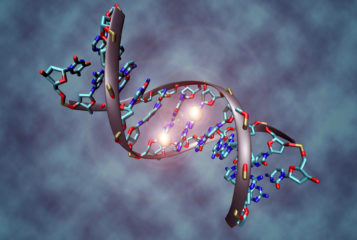Older women who take little exercise and live a more sedentary lifestyle have disproportionately older DNA, researchers have found.
The study, published in the American Journal of Epidemiology, found that elderly women who exercised for less than 40 minutes and sat for over ten hours a day had shorter telomeres.
Telomeres are short 'caps' of DNA found on the ends of chromosomes, which protect them from deteriorating. Every time cells replicate the telomeres shorten, eventually exposing chromosomes to damage, which is linked to the signs of ageing.
'Our study found cells age faster with a sedentary lifestyle. Chronological age doesn't always match biological age,' said Dr Aladdin Shadyab, a postdoctoral fellow at the University of California San Diego School of Medicine, USA, and lead author of the study.
The researchers sampled DNA from the blood cells of 1481 white and African-American women aged between 64 and 95 years old who were part of the Women's Health Initiative study in the USA, and tested the samples for telomere length. They measured participants' movements over the course of a week using accelerometers, which the women wore all the time (except when bathing or swimming). Participants in the study also reported their amounts of physical activity and sleep patterns.
On average, women who sat for more than 10 hours a day had 170 fewer base pairs in their telomeres compared to those who spent less than eight hours sitting, with a range of difference from four up to 340 base pairs.
It has been estimated that telomeres shorten by approximately 21 base pairs every year. The researchers therefore suggest that cells with the shorter telomeres were biologically older by around eight years.
Women who were sedentary but took part in moderate daily exercise were not affected.
'We found that women who sat longer did not have shorter telomere length if they exercised for at least 30 minutes a day, the national recommended guideline,' said Dr Shadyab.
However, the more-sedentary women in the study were also more likely be older, obese, or with a history of chronic illnesses – all of which might play a role in shortening telomere length.
When these facts were analysed, time spent being sedentary made no difference to telomere length. Only exercise and a sedentary lifestyle appeared to influence telomere length.
'Discussions about the benefits of exercise should start when we are young, and physical activity should continue to be part of our daily lives as we get older, even at 80 years old,' recommended Dr Shadyab.
Sources and References
-
Sedentary lifestyle in older women 'ages body cells'
-
Sitting down for too long can speed up ageing, finds new study
-
Sitting down all day 'may accelerate DNA ageing'
-
Associations of Accelerometer-Measured and Self-Reported Sedentary Time With Leukocyte Telomere Length in Older Women
-
Too much sitting, too little exercise may accelerate biological aging





Leave a Reply
You must be logged in to post a comment.